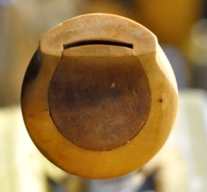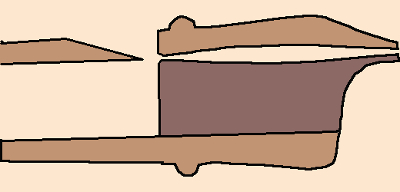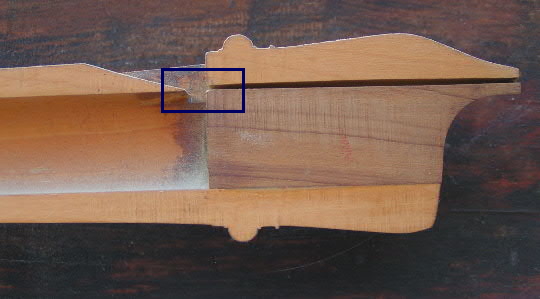PHILIPPE BOLTON
FLUTES A BEC & FLAGEOLETS FAITS A LA MAIN
A closer look at the recorder's windway

the curvature of the windway |

the longitudinal curvature of the windway and block (exagerated in this drawing) |
A recorder's windway is normally not straight, but slightly tapered. In most cases it is also curved. Moreover the upper and lower surfaces are also curved lengthwise, the top (the windway itself) more so than the bottom (the block's upper surface). This has an enormous effect on the tone. In the drawing on the right these curves are exaggerated to make them more visible. Their profile actually looks like the section view in the photograph below. The precision required is as small as a tenth of a millimeter, sometimes even less.

A cross section of the windway showing its actual profile. At the exit are two small chamfers (in the blue rectangle). These are shown in detail on the right. |
 At the windway's exit there are two small chamfers about 0.5 to 1 mm wide, set at an angle of about 45°. The top one is on the instrument itself; the lower one is on the block. These stabilise the air flow and are necessary for the recorder's tone quality and speech. Their adjustment is intricate. |